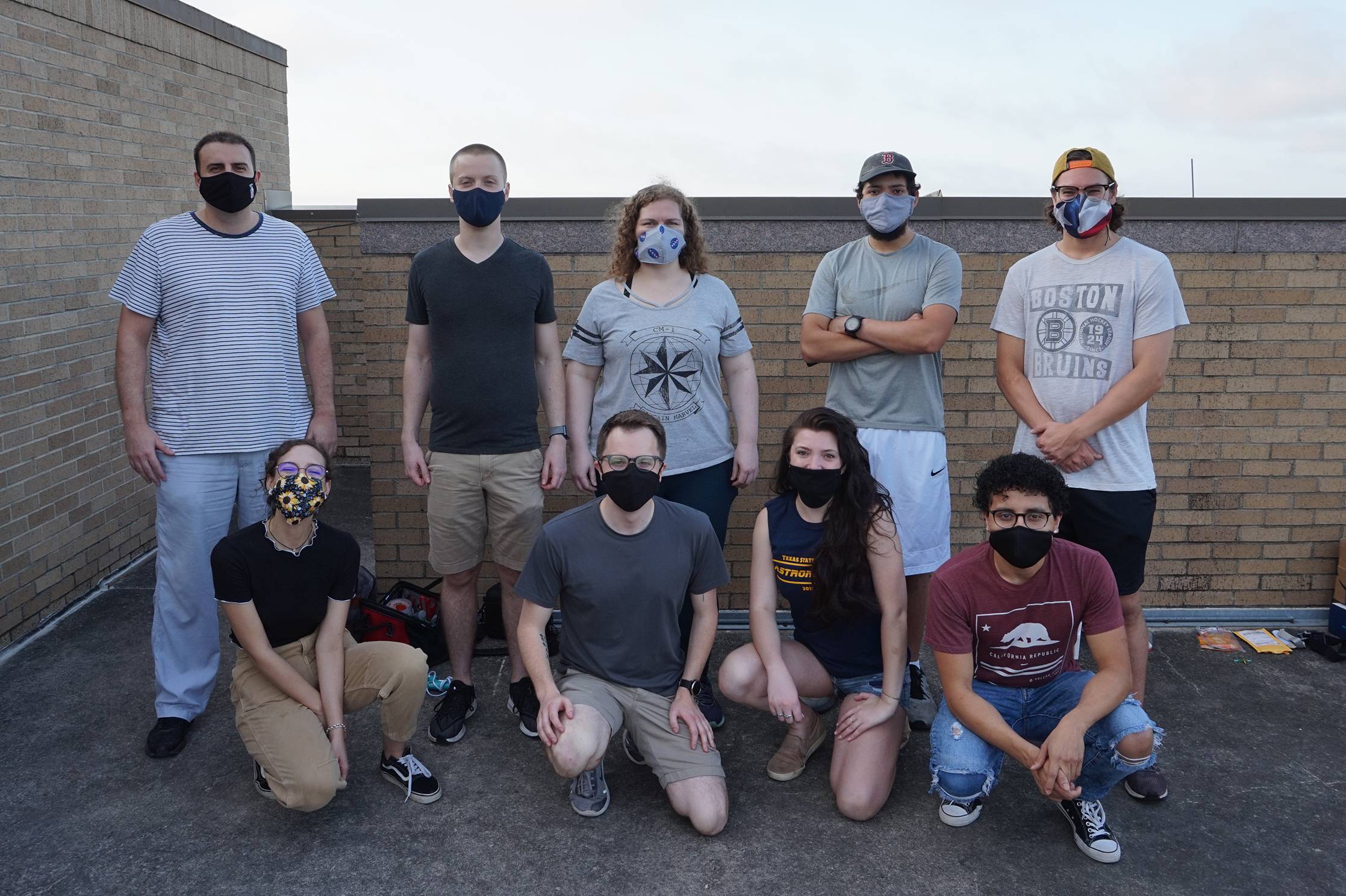Icarus-I project launches first mission to collect atmospheric data
Jernice Kelley | October 27, 2020

A Texas State University team recently concluded the Icarus-I project, launching a high-altitude balloon to collect data giving insight into the role the atmosphere plays in blocking potentially harmful particles. The balloon, launched from the Texas State observatory, reached an altitude of over 88,000 feet and traveled almost 21 miles to New Braunfels.
Evan Jellison, a junior physics major, and Kelly Stephenson, a senior electrical engineering major, were the project leads for Icarus-I. Dr. Blagoy Rangelov, assistant professor in the Department of Physics, was the faculty advisor on the project.
According to project leads, some of the most challenging aspects of the launch revolved around rescheduling, COVID-19 restrictions, and retrieving the balloon itself, which landed in a tree more than 30 feet in the air.
"Everyone was incredibly determined to make Icarus-I a success and I think that really is what made this mission such a positive experience even with the challenges. The team was eager to get to work and everyone stepped up whenever something went wrong,” Jellison said. Added Stephenson, “Everyone gave their own perspectives and ideas for everything, and in the end it all worked out!”
Both students reflected on how their experience with the Icarus-I project and their time at Texas State will prepare the team for their respective future careers.
“This project allowed students to learn research mission development, leadership skills, team-building skills and so much more that can all be carried over to any career,” Jellison said.
“This was a great opportunity to learn about high altitude balloons and how this is just one step closer to Texas State launching its first low earth orbiting satellite. The experience is ideal for anyone in a STEM field since it provides the skills necessary to succeed in research and a future career in the STEM field,” Stephenson said.
The team collected more than just atmospheric data. Another goal of the Icarus-I project was to determine how the muon, defined as an elementary particle similar to the electron, rate changes as a function of altitude (above sea level) and compare it to theoretical models. According to Jellison, what makes muons unique is their ability to survive further distances than most other subatomic particles while interacting with matter.
Through the conclusion of their research, Jellison and Stephenson’s team would like to use their data to improve future launches. The team plans to consider the few bumps in the road they may have experienced and use them to generate a different launch experience.
Share this article
For more information, contact University Communications:Jayme Blaschke, 512-245-2555 Sandy Pantlik, 512-245-2922 |